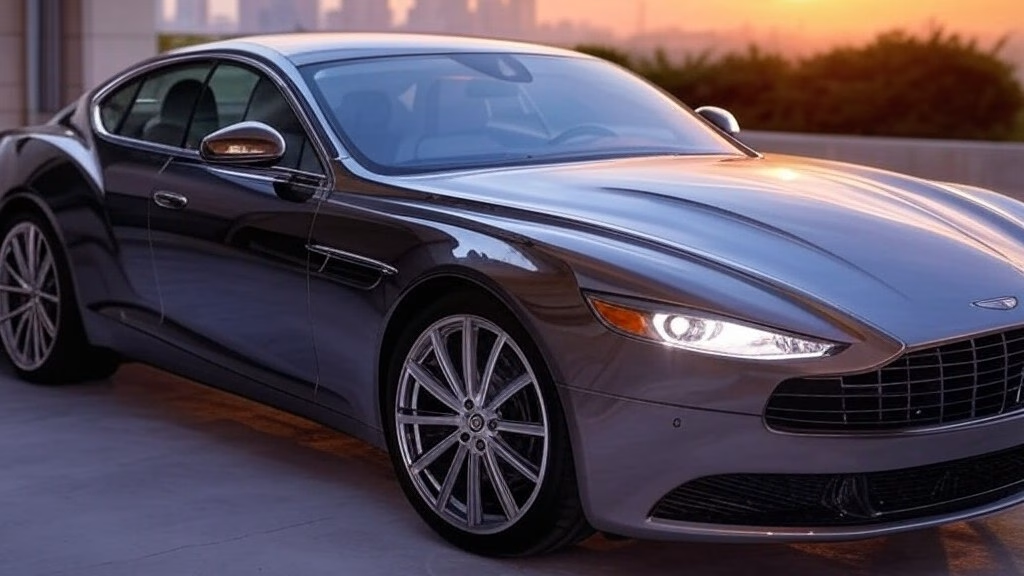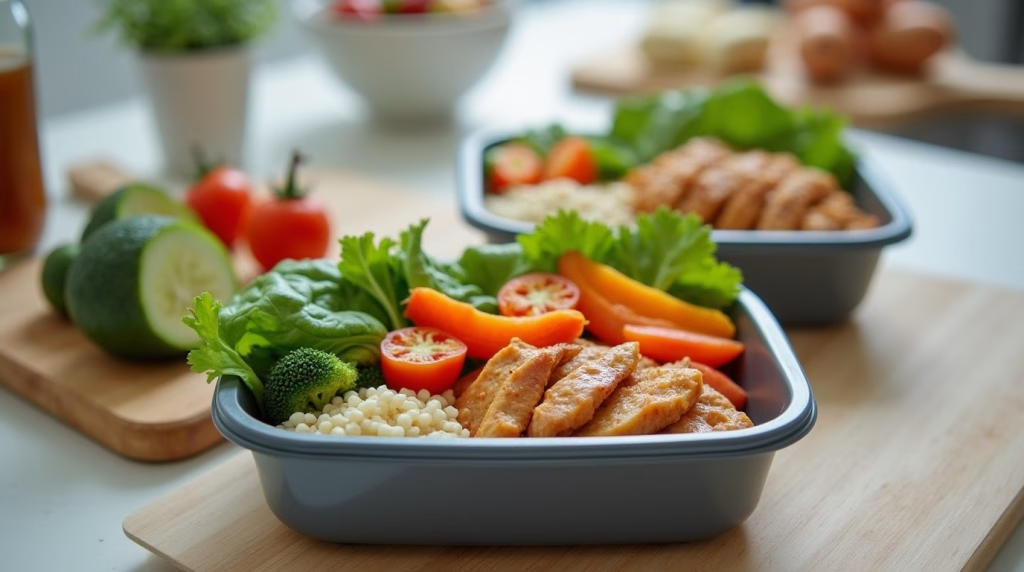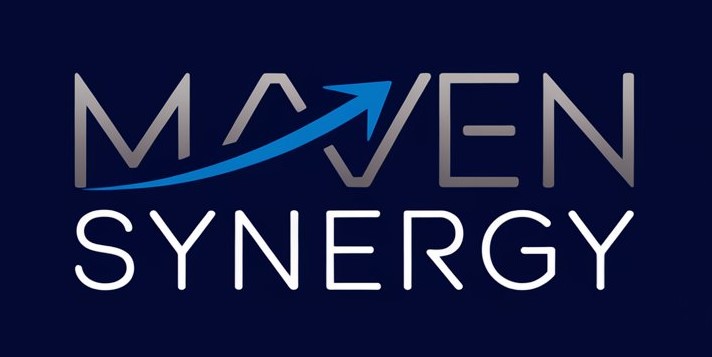7 Things You NEED to Stop Buying to Get Rich
Listen, I’m going to be brutally honest with you – you’re probably throwing away your chance at wealth right now, and you don’t even realize it. I know because I’ve been there, watching my hard-earned money vanish on things that seemed “essential” at the time. But here’s the truth that changed my life: Getting rich isn’t just about making more money – it’s about being smart with what you already have.
You know what really fires me up? Seeing people trapped in the cycle of buying things they think will make them look wealthy, while actually keeping themselves from BUILDING real wealth. The good news? You’re just seven simple changes away from transforming your financial future. Trust me, once you know what these wealth-draining purchases are, you’ll never look at your spending the same way again.
1. Expensive Cars: A Wealth Killer

Let me tell you something that might hurt a little – that shiny new car you’re dreaming about? It’s probably the #1 reason you’re not building wealth right now. I learned this the hard way when I bought my first “luxury” car, thinking it would show everyone I had “made it.” Boy, was I WRONG!
The Hidden Costs That Are Destroying Your Wealth
Here’s what the dealerships don’t want you to know – your expensive car is bleeding you dry in ways you haven’t even realized. Let’s break down the real costs:
| Expense Type | Luxury Car (Annual) | Standard Car (Annual) | Potential Savings |
| Depreciation | $12,000 | $3,500 | $8,500 |
| Insurance | $3,600 | $1,200 | $2,400 |
| Maintenance | $2,400 | $800 | $1,600 |
| Fuel | $2,800 | $1,500 | $1,300 |
| Total | $20,800 | $7,000 | $13,800 |
You see those numbers? That’s $13,800 you could be investing EVERY SINGLE YEAR! If you invested that amount annually with an 8% return, you’d have over $200,000 in just 10 years.
The Depreciation Trap
The moment you drive that luxury car off the lot, you lose 20-30% of its value. It’s like taking a stack of cash and throwing it out the window! I’ve seen too many friends fall into this trap, thinking their car is an “investment.” Trust me, it’s not.
Pro Tip: If you really want to build wealth, buy a reliable used car that’s 3-4 years old. Let someone else take the depreciation hit, and invest the difference in appreciating assets instead.
2. Designer Brands: Paying for a Label

Now, let’s talk about another wealth killer that might be sitting in your closet right now. You know those designer clothes you think make you look successful? They’re actually keeping you from REAL success.
The Psychology Behind Luxury Brands
I used to be that person who thought wearing expensive brands would make me feel more confident and successful. But here’s what I discovered – these brands are playing with our minds, making us believe we need their products to be worthy. It’s all marketing, and we’re falling for it!
Consider this breakdown of what you’re really paying for:
| Cost Breakdown | Designer Item | Quality Non-Designer | The “Brand Tax” |
| Materials | 15% | 30% | -15% |
| Labor | 10% | 20% | -10% |
| Marketing | 40% | 15% | +25% |
| Brand Premium | 25% | 0% | +25% |
| Retail Markup | 10% | 35% | -25% |
Smart Shopping Alternatives
Listen, I’m not saying you need to dress poorly – far from it! Here’s what I do instead:
- Focus on quality basics that last longer
- Shop during end-of-season sales
- Look for high-end consignment stores
- Invest in classic pieces rather than trendy items
Pro Tip: Create a capsule wardrobe with 20-30 quality pieces that mix and match perfectly. You’ll look more put-together than someone with a closet full of designer labels.
The Real Cost of Brand Addiction
Let’s get real about the numbers. If you typically spend $5,000 annually on designer clothes, you could cut that to $1,500 by shopping smart and still look fantastic. That’s $3,500 saved each year! Invested wisely, that could grow to over $50,000 in just 10 years.
Think about this – every time you’re about to buy a designer item, ask yourself: “Would I rather have this logo on my chest, or $10,000 more in my investment account in a few years?”
The Wealthy Mindset Shift: Here’s something that changed my life – truly wealthy people often don’t flaunt designer brands. They’re too busy building real wealth through investments and smart money decisions. The next time you feel the urge to buy that expensive logo-covered item, remember: true wealth is built by what you keep, not by what you wear.
3. The Latest Tech Upgrades: A Never-Ending Money Pit

You won’t believe this, but I used to be that person camping outside stores for the latest iPhone release. CRAZY, right? Let me share something that hit me like a ton of bricks – I was literally paying thousands each year just to have slightly better versions of things I already owned!
The Real Cost of Tech Addiction
Let’s break down what your tech obsession is really costing you:
| Device | Annual Upgrade Cost | 2-Year Usage Cost | 4-Year Usage Cost |
| Smartphone | $1,200 | $600 | $300 |
| Laptop | $2,000 | $1,000 | $500 |
| Tablet | $800 | $400 | $200 |
| Smartwatch | $400 | $200 | $100 |
| Total | $4,400 | $2,200 | $1,100 |
Look at those numbers! By simply extending your upgrade cycle to 4 years, you’re saving $3,300 annually. That’s enough to max out your Roth IRA contribution!
The Minimal Gains Trap
Here’s what tech companies don’t want you to know – the performance improvements between generations are getting smaller and smaller. Check this out:
- iPhone 13 to 14: Only 15% faster processor
- Latest MacBook: Just 20% better battery life
- New iPad: Screen basically looks the same
Pro Tip: Follow my “30% Rule” – only upgrade when there’s at least a 30% improvement in the features you actually use daily. Trust me, your wallet will thank you!
Smart Tech Investment Strategy
Instead of blindly upgrading, here’s what I do now:
- Buy one generation behind the latest
- Wait for holiday sales or refurbished deals
- Sell old devices while they still have value
- Focus on maintenance to extend device life
Now, speaking of money drains, let’s talk about another habit that’s probably eating away at your wealth right now…
4. Eating Out Too Often: A Silent Budget Killer

I get it – after a long day at work, nothing seems easier than hitting up your favorite restaurant or ordering DoorDash. But HOLD UP! Let me show you how this “convenience” is secretly destroying your path to wealth.
The True Cost of Convenience
I tracked my own spending for a month, and the results were SHOCKING. Here’s what I discovered:
| Meal Type | Restaurant Cost | Home-Cooked Cost | Monthly Savings |
| Breakfast | $12 x 20 = $240 | $3 x 20 = $60 | $180 |
| Lunch | $15 x 20 = $300 | $4 x 20 = $80 | $220 |
| Dinner | $25 x 15 = $375 | $8 x 15 = $120 | $255 |
| Monthly Total | $915 | $260 | $655 |
That’s $655 in savings PER MONTH! Invested wisely, this could grow to over $100,000 in just 10 years at an 8% return rate.
Hidden Costs You’re Ignoring
Beyond the obvious menu prices, you’re also paying for:
- Delivery fees and tips (averaging $8-10 per order)
- Higher drink prices (300-400% markup)
- Impulse appetizers and desserts
- Gas and parking for dine-in meals
Pro Tip: Use the “Restaurant Reset” strategy – cook at home Monday through Thursday, and enjoy eating out on weekends. You’ll save money AND appreciate those restaurant meals more!
Smart Dining Strategies
Here’s how I’ve cut my food spending by 70% without feeling deprived:
- Meal prep Sundays (3 hours saves me 10 hours during the week)
- Buy bulk ingredients when on sale
- Learn 5-7 simple, delicious recipes you can make with eyes closed
- Keep healthy snacks at work to avoid impulse lunch purchases
The Wealth-Building Bonus
Here’s something most people miss – cooking at home isn’t just about saving money. You’re also:
- Learning valuable life skills
- Eating healthier (saving on future medical bills)
- Creating opportunities for family bonding
- Developing discipline that carries over to other areas of finance
Remember this: Every time you reach for that food delivery app, you’re not just spending money – you’re missing an opportunity to invest in your future. The choice between a $30 takeout meal and a $10 home-cooked dinner might seem small, but it’s these daily decisions that separate the wealthy from the wannabes.
5. Home Upgrades That Don’t Add Value
I’ve got a confession to make – I once spent $15,000 on a “luxury” bathroom remodel, thinking it would boost my home’s value. Spoiler alert: when I sold the house years later, I barely recovered half of that investment. Let me save you from making the same expensive mistakes I did!
The ROI Reality Check
Not all home improvements are created equal. Here’s what I’ve learned about which upgrades actually pay off:
| Upgrade Type | Average Cost | Value Added | ROI Percentage |
| Kitchen Overhaul | $40,000 | $20,000 | 50% |
| Luxury Bathroom | $25,000 | $10,000 | 40% |
| Pool Installation | $45,000 | $15,000 | 33% |
| Basic Landscaping | $5,000 | $4,000 | 80% |
| Energy Efficiency | $8,000 | $7,200 | 90% |
Emotional vs. Smart Spending
Listen, I get it – those home renovation shows make everything look AMAZING. But here’s what they don’t tell you about emotional spending:
- That $50,000 kitchen won’t cook better meals
- Marble countertops won’t increase your home’s value as much as you think
- Ultra-luxury appliances often need expensive repairs
- Over-customization can actually DECREASE your home’s value
Pro Tip: Before any major home upgrade, ask yourself: “Would I get at least 75% of this money back if I sold my house next year?” If the answer is no, think twice!
Smart Home Investment Strategy
Here’s what I focus on now:
- Essential maintenance first (roof, HVAC, foundation)
- Energy-efficient upgrades (better ROI + monthly savings)
- Curb appeal improvements (biggest bang for your buck)
- Minor kitchen and bathroom updates (not full luxury remodels)
Now, let’s shift gears and talk about another wealth-draining habit that might be hurting your financial future…
6. Luxury Vacations: A Short-Term Pleasure with Long-Term Costs

I still cringe when I think about the $10,000 luxury vacation I put on my credit card five years ago. Sure, the Instagram photos were great, but you know what wasn’t? The MONTHS of debt payments that followed!
The Hidden Costs of Luxury Travel
Let’s break down what a “luxury” vacation really costs versus a smart alternative:
| Expense Category | Luxury Trip | Smart Travel | Potential Savings |
| Accommodation | $3,500 | $1,200 | $2,300 |
| Transportation | $2,000 | $800 | $1,200 |
| Dining | $1,500 | $500 | $1,000 |
| Activities | $1,000 | $300 | $700 |
| Shopping | $1,000 | $200 | $800 |
| Total | $9,000 | $3,000 | $6,000 |
The Social Media Trap
Here’s something I realized – we’re spending more on vacations than ever before, and social media is largely to blame. Why?
- FOMO driving us to exotic (and expensive) locations
- Pressure to create “Instagram-worthy” moments
- Luxury influencers making us feel like we need 5-star everything
- The need to “keep up” with friends’ travel posts
Pro Tip: Create a dedicated “travel fund” and only book trips you can pay for in cash. The best memories aren’t made in luxury resorts – they’re made in the moments of discovery and adventure that don’t cost a fortune.
Smart Travel Strategies That Build Wealth
Want to know how I travel now? Here’s my wealth-building approach:
- Book during off-peak seasons (40-60% savings)
- Use credit card rewards points (but NEVER carry a balance)
- Focus on experiences over luxury accommodations
- Choose destinations where your dollar goes further
The Wealth-Building Alternative
Think about this – if you save $6,000 on vacations annually and invest it:
- In 10 years at 8% return: $89,000
- In 20 years at 8% return: $271,000
- In 30 years at 8% return: $679,000
That’s right – those luxury vacations aren’t just costing you today’s dollars; they’re costing you FUTURE wealth too!
Remember: The goal isn’t to never travel – it’s to travel smart. I still explore the world, but now I do it in a way that builds my wealth instead of draining it. When you’re sitting on a beach in early retirement, you’ll be glad you made the switch to smarter travel habits now.
7. Expensive Health Trends: When Wellness Becomes Wasteful

Let me share something that might shock you – I used to spend over $300 monthly on the latest health trends, thinking I was “investing in my wellbeing.” But here’s the truth I discovered: most expensive wellness trends are just clever marketing wrapped in fancy packaging!
The Truth About Trendy Wellness Costs
Let’s break down the real costs of popular health trends versus effective alternatives:
| Wellness Trend | Monthly Cost | Basic Alternative | Monthly Savings |
| Boutique Gym | $200 | Home/Park Workouts | $185 |
| Fancy Supplements | $150 | Basic Vitamins | $130 |
| Meal Prep Service | $400 | Home Cooking | $250 |
| Recovery Gadgets | $50 | Basic Stretching | $50 |
| Total | $800 | $85 | $715 |
What Actually Works
Here’s what I’ve learned after years of wasting money on health fads:
- Most expensive supplements do exactly what basic ones do
- That $2,000 high-tech exercise bike? Regular cycling works just as well
- Designer “superfoods” aren’t more nutritious than regular healthy foods
- Fancy recovery tools often don’t outperform simple rest and stretching
Pro Tip: Focus on the proven fundamentals: regular exercise, whole foods, adequate sleep, and stress management. These cost almost nothing but deliver the best results!
Smart Health Investment Strategy
Want to know how I stay healthy while building wealth now? Here’s my approach:
- Use free fitness apps instead of expensive trainers
- Cook nutrient-rich meals at home
- Walk or run outdoors (free cardio!)
- Join community sports groups (social + exercise)
Remember this: True health doesn’t come with a designer price tag. That $715 monthly savings? Invested wisely over 10 years at 8% return, you’re looking at over $130,000 in your wealth-building account. Now THAT’S what I call a healthy investment!
Conclusion: Your Path to Financial Freedom Starts Today
You know what? After diving deep into these 7 wealth-draining habits, I’ve realized something profound – getting rich isn’t about making more money, it’s about being smart with what you already have. I’ve personally made the mistake of falling for many of these spending traps, especially with tech gadgets (yes, I was that person who HAD to have every new iPhone!).
Think about it – every dollar you’re spending on that designer bag or luxury car payment could be growing in your investment account, working hard to build your future wealth. The real secret to building wealth isn’t some complex financial strategy – it’s about making conscious decisions every single day.
Let’s quickly recap the 7 things you need to stop buying:
- Expensive cars that depreciate faster than your morning coffee gets cold
- Designer brands that only serve to make their owners richer, not you
- Latest tech upgrades that add minimal value to your life
- Excessive dining out that’s eating away at your wealth
- Unnecessary home upgrades that don’t boost your property value
- Luxury vacations that leave you with memories AND debt
- Trendy health fads that slim down your wallet more than your waistline
But here’s the thing – I’m not saying you should never enjoy life or treat yourself. What I AM saying is that you need to be intentional about your spending. Before making any purchase, ask yourself: “Is this bringing me closer to or further from my financial goals?”
The path to wealth isn’t about deprivation – it’s about optimization. Start small. Maybe this week, skip that fancy coffee and transfer that money to your investment account. Next month, resist the urge to upgrade your phone if the current one works fine. These small changes compound over time, just like your investments should.

Frequently Asked Questions (FAQs)
Q: How much money can I actually save by cutting out these expenses? You’d be amazed! Let’s take dining out as an example. If you spend $50 on restaurants per week (which is conservative for many), that’s $2,600 per year. Invested wisely over 20 years at a 7% return, that could grow to over $100,000! Now multiply that across all seven categories we discussed.
Q: Won’t cutting all these expenses make life boring? Not at all! I’ve found that being mindful with spending actually leads to more creativity and meaningful experiences. Instead of expensive restaurants, I’ve discovered the joy of hosting dinner parties. Rather than luxury vacations, I’ve had amazing adventures through local exploration and strategic travel hacking.
Q: What should I do with the money I save from cutting these expenses? Great question! I recommend following the 80/20 rule: Invest 80% of your savings in a diversified portfolio (think low-cost index funds) and keep 20% for strategic splurges that truly bring you joy. Remember, the goal isn’t to never spend – it’s to spend smartly.
Q: How long until I start seeing results from these changes? In my experience, you’ll notice a difference in your bank account within the first month. However, the real magic happens over time. Many of my readers report reaching their first $100,000 in savings within 3-5 years of implementing these changes consistently.
Q: What’s the first step I should take to start this journey? Start by tracking your spending for one month. You can’t optimize what you don’t measure! Use a simple spreadsheet or budgeting app to categorize every expense. I guarantee you’ll find at least one of these seven wealth-draining habits in your spending pattern.
Remember, building wealth is a marathon, not a sprint. Every financial decision you make today shapes your financial future. So, what’s the first expensive habit you’re going to tackle? The choice is yours, but the time to start is now. Your future wealthy self will thank you for the decisions you make today.
Drop a comment below sharing which of these seven items you’re going to stop buying first – I’d love to hear about your journey to financial freedom!

